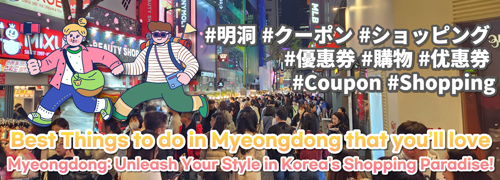popular in Daejeon
informations on traveling
80Articles
Review
10,224Reviews
Famous spot for Daejeon
Daejeon(Yuseong-gu)
,
Yuseong Hot Springs is located at the center of Daejeon. The hot spring is known to be effective in countering many kinds of maladies. The water here contains alkaline minerals such as calcium, and potassium, sulphur, carbonic acid, silicic acid and radium.An especially high concentration of radium is found here. Such alkaline hot springs are known to be good for treating neuralgia and geriatric diseases. Nearby are large accommodations with many convenient facilities, which make it easy to visit here while touring.Yuseong Hot Springs has long been associated with cranes. During the final days of Baekje Kingdom, a man who was the only son and heir of a family for seven generations was seriously wounded during a war with Silla. His mother worried greatly over her son’s wounds.One day she saw a crane with a wounded wing dip itself into a hot spring in the midst of snow covered ground and healed. She took her son there and his wound was healed as well so the legend goes. Perhaps because of this legend, the Yuseong Hot Springs is famous for its incredible healing properties.
Daejeon(Dong-gu)
,
Daejeon Jungang Market is a large comprehensive market consisting of many smaller markets including the Jungang Comprehensive Market, Jungang Arcade Market, Jayu Wholesale Market, New Jungang Market, and Jungang Wholesale Market. Daejeon Jungang Market is located in downtown Dong-gu and is one of the most famous traditional markets in the city. The market has many different sections (dried seafood street, hardware street, fish street, herbal medicine street, hanbok street, delicacy street, etc.) which stretch all the way from Daejeon Station to the banks of the Daejeoncheon Stream.
Daejeon(Jung-gu)
,
Located in Daejeon, Rainbow Korean Restaurant (무지개한정식) offers a traditional fine dining experience of royal court cuisine. The restaurant is committed to producing authentic dishes made with locally produced fresh ingredients without any MSG.The restaurant serves over 20 different menu items and goes way beyond standard dishes by offering delicacies such as sliced flatfish, ear shell mixed with vinegar pepper sauce, stirred turban shell, smoked duck, and steamed beef ribs. Separate rooms are available for private parties and a wide dining hall may be booked for rehearsal dinners, 60-year birthday parties, and other special events.
Daejeon(Dong-gu)
,
Sangso Forest Park is a public park covering parts of Maninsan and Sikjangsan Mountains in Daejeon. The entrance of the park is lined with sycamore trees, while the inside offers several promenades and mountain hiking trails. In addition, stone pagodas are placed throughout the park as prayer sites.
Daejeon(Yuseong-gu)
,
The Currency Museum of Korea is the first museum in Korea to be dedicated solely to modern and ancient currencies. The museum (est. 1988) is operated by the Mint Corporation of Korea as part of its non-profit public services and is open to visitors free of charge with a view of increasing public knowledge of the nation’s currency. The museum features a total of 120,000 pieces including: coins currently in use both in Korea and overseas; coins from modern times (from the Late Joseon Dynasty until today); 80 types of commemorative coins; 88 types of ‘special money’; postage stamps, and other materials.Exhibition Room 1 presents a wide selection of coins from both ancient eras and modern times, with many of the coins dating back to the Goryeo and Joseon dynasties. Coins on display in this room include Geonwonjungbo (996), the first coin ever minted in Korea; Haedongwonbo (1097); and Sangpyeongtongbo, the most widely used coin during the Joseon Dynasty. Other displays include commemorative coins from past Olympics, special coins, charms, amulets and Lydian currency, the world’s first-ever alloy coin minted around 670 BC.Exhibition Room 2 (Exhibition of Bills) displays a wide variety of bills by era as well as information detailing the production process of a banknote (from the manufacturing of the paper used to the finished product). Exhibition Room 3 shows how authorities spot counterfeit money while Exhibition Room 4 has a wide selection of stamps, medals, and currencies from over 120 different countries around the world including Russia and North Korea.
Daejeon(Daedeok-gu)
,
This center shares how water resources are developed, used, and managed through various educational tools and exhibits. The center also hosts events and performances for visitors and local residents. The facility offers guests with a thorough knowledge of the life-cycle of water and the important benefits it provides.
Daejeon(Jung-gu)
,
Daejeon O-World (Formerly “Daejeon Zoo”) was established when the Daejeon Zoo and Joy Land, an amusement park, were integrated under the supervision of the Daejeon City Corporation. The project cost a whopping 40 billion won and resulted in the construction of Flower Land (580,000m²) in addition to the renamed Zoo Land and the preexisting Joy Land.The three main sections of Daejeon O-World are Zoo Land, Joy Land, and Flower Land. Zoo Land is currently home to a total of 600 animals of 130 different species including American black bears, Bengal tigers, lions, elephants, giraffes, zebras, and ostriches. Amusement rides, waterslides, and four-season sledding are housed at Joy Land. Flower Land boasts a number of smaller sections such as Rose Garden, Four Season Garden, Herb Garden, and Maze Garden and is home to a total of 150,000 tress of 100 different species and 200,000 flowers of 85 different species. An outdoor stage and concert hall are also located in the area.There are plenty of things to see and enjoy in every corner of Daejeon O-World. Just beyond Festival Street, visitors will find a large (3000m²) pond with a fountain that shoots water as high as 20m. At night, colorful lights illuminate the pond and fountain, creating a dazzling scene. The water from the fountain is also used as a water screen for special performances.In recent years, O-World expanded its attractions to include Herbivore Safari (with around 20 deer) and Wolf Safari (with about 7 wolves) in the area between Zoo Land and Flower Land.
Daejeon(Yuseong-gu)
,
Expo Park is the country’s only theme park promoting the latest sciences and technology in a learning facility that aims to raise public awareness in society, and was established following the closing of the Daejeon Expo in 1993The park features several themed pavilions for visitors to choose from, including: the world’s largest I-Max theater, a 3D theater, an I-Max dome theater, a Simulation Theater, Body World, the Electric Energy Pavilion, the Energy Pavilion, the Nature and Life Pavilion, the North Korea Pavilion, and the Tower of Great Light.There are programs offered year-round introducing science to newcomers in an easy and fun way that include various fun and interesting scientific experiments. Classes and programs are also available for traditional crafts, robotics, and other science-related recreation activities. The park’s featured IMAX Dome, with a 27 meter-diameter, is the only one of its kind in Korea. Additionally, the park also features an Aqua Resort, a water play facility for families, and also a solar power generation system.With the theme of “Youth, Love, Romance and Family,” Hanbit Square in particular, is an amazing night attraction where visitors can experience an exotic atmosphere combining a large and colorful flowerbed spread over 6,477 pyeong (approximately 21,411 square meters) of land, a dynamic Music Fountain that also displays a special flame effect, and a breathtaking fireworks show.The Park’s other facilities include a Maglev Train (monorail), playing fields and multiple facilities for holding special events, such as performing halls. There is also the CMB Expo Art Hall with 1,105 seats and the Convention Center equipped with a six-language interpretation system.
Daejeon(Daedeok-gu)
,
Daecheongho Lake is a man-made lake, stretching across Cheongju-si, Okcheon-gun, and Boeun-gun. Construction began in 1975 and finished in 1980, and the lake supplies water for various use to people in Daejeon and Cheongju.The reservoir water spans an area of over 72.8㎢ with a length of 80km, and the water kept in storage has a volume of 1.5 billion tons, makes the reservoir the 3rd largest lake in Korea. The area is famous for the beautiful driving course along a tree-lined road through the nearby mountain which has an altitude of 200 to 300m. Also, resident birds and migratory birds, such as white heron, can be seen during summer in the upper region of the lake.Upon reaching the top of the observatory, a panorama of the entire surroundings can be seen. Opened in 1998, Water Culture Center is comprised of a 3-D Video room and aquarium as well as a grass field nearby. Geumgang Resort, Janggye Tourism Complex (Daecheong Beach Land), and Munui Cultural Properties Site are nearby tourist attractions. It takes roughly 3 hours to look around the whole lake by car.





